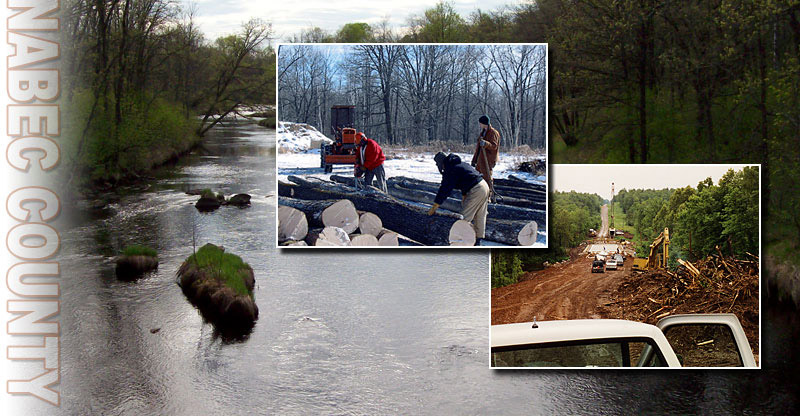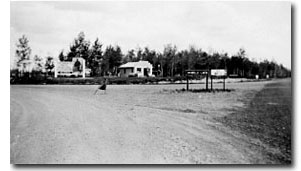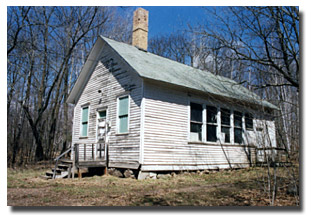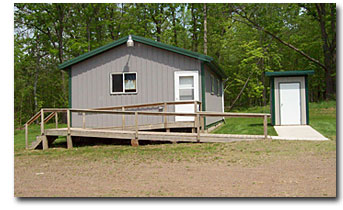 |
Townships are the original form of local government in Minnesota, established as part of the Northwest Ordinance of 1787 which eventually led to the creation of the State of Minnesota. Today, the term township generally refers to organized but unincorporated communities governed by a local board of supervisors and created to provide services to their residents. Townships are governed (as every local unit of government) by state statute – primarily Minn. Stat. Chapters 365 – 368. A Board of Supervisors elected to staggered terms make up the governing body for most townships. The annual meeting which is held on the second Tuesday of March each year is what really sets the townships apart from other forms of local government. It is at this meeting that the residents of the township have a direct opportunity to have a voice in how the township is run. They do this by voting on a variety of matters but most importantly, by directly voting on and approving the Town’s tax levy for the next year. This basically means that the town board can only spend that which has been authorized by the voters. Ford Township has just opted to hold their elections in November in even-numbered years effective in 2008, so the Board members will then be elected to four-year terms. The Board of Supervisors in most townships consists of three members elected by the residents. The Supervisors must be residents of the township. There is an Option A form of government which has a five member board. While the Supervisors are the only ones with an official vote on most final decisions, residents of the township play an important role in the decision making process through the annual meeting. Townships must also comply with State mandates and on some issues the township can be ordered to do things by the county or, in the case of planning and zoning, must be consistent with or more restrictive than county regulations. The Board of Supervisors is joined by a township clerk and treasurer. In Ford Township these positions are elected positions although these offices can be made appointed positions under an Option B form of township government. The offices also may be combined if Option D has been adopted. Day-to-day paperwork is handled by the town clerk whose responsibilities also include conducting elections. The Treasurer is responsible for receiving all monies of the town as well as paying it out upon the order of the Supervisors. Neither the Clerk nor the Treasurer has a vote on the board. The Board of Supervisors appoint one of their own to serve as the chairperson, although other than running the board meetings and being the person required to sign official documents and checks, the chairperson has no extra powers. The supervisors usually divide up certain tasks, such as overseeing work by contractors, etc. but no one person can make decisions binding on the township. The types of services provided by townships vary greatly from community to community. However, townships control approximately 47 percent of the roads in Minnesota which means all townships have to either provide or contract out for road maintenance services. Some townships provide everything from volunteer fire departments, to park recreational services, cemetery maintenance and wastewater treatment services while others such as Ford, use service contracts to benefit township residents and protect the public’s health, safety and welfare. Local property taxes are the largest source of township revenues. State aid to townships has all but been eliminated.
All townships are subject to the open meeting law, which means that all meetings of the town board and any official township committees must be accessible to members of the public and be preceded by proper notice. In addition, the Open Meeting Law requires that minutes be kept of the proceedings of the governing body and the minute book must be available for review by members of the public. Any ordinance adopted by the town board must be published in the designated official newspaper of general circulation with the township, so notice of all such regulations will always be provided. Information taken from “Township Government 101” produced by the Minnesota Association of Townships.
Violent volcanic action, temperate tropical weather and glaciers several thousand feet deep have all contributed to the geology of what we now know as Ford Township. The granite (Warman gray) outcroppings, our clay soil, plentiful boulders with sand and gravel deposits are all evidence of this phenomenon.
The Snake River also played a huge part in county and township history as the loggers made their way north in search of the mighty White Pine. Logging began in the county as early as 1838 and logs were still being floated down the river as late as 1909. The white pine stumps still standing in our woodlands today are silent testimony to the process. With the land cleared, homesteaders were able to move in: Henry Weal in 1898 and Charles Peterson and Charles Johnson in 1899. The timber barons, Hersey, Staples and Bean are dominate as original owners of most any piece of township property. Kanabec County was organized in 1858 with officials actually taking office on June 10, 1859. Kanabec is the Chippewa name for snake, given by them for the Snake River. The name has a heavy accent on the second syllable, the a in that syllable having the long sound, as in day. Many people mispronounce it as if it were spelled Kennebeck. The 1860 census listed the county population at 30! With settlers came the need for roads, schools, mail routes and, of course, county and township government. The northern part of the county was originally classified as Unorganized Territory but that was split into Hillman and Knife Lake Townships in 1894. Kroschel was organized in 1899, Peace in 1900, and Pomroy in 1903. In 1915 Haybrook split from Hillman and in 1916 Ford Township split off from Peace. Ford was the last township established in Kanabec County and was organized on May 16, 1916. There is definitely a difference of opinion on whether our township was named after Henry Ford (the automobile manufacturer who had led a peace mission to Europe the previous year), the Ford automobile, or the fact that one had to ford the Snake River (go through the water) since there was no bridge on Highway #5 in those days. The real story has been lost but Ford Township we will remain. In the first days of the township, meetings were held in the Board members homes. The official papers were kept at the home of the clerk, Mrs. Hedwig Gylling. Unfortunately her home burned during the winter of 1919 and those first 3 years of records were lost. Another fire in the late 1960s destroyed the Treasurer’s records when the home of E. M. Peterson burned. As a safeguard, in 2002, all of the old township records were placed in storage at the Kanabec History Center, Mora, and, therefore, may be accessed for research by any interested party. Old records indicate that in 1920, the Township was paying $18.00 per year to the Cherry Grove School (District #48) for use of the building as a town hall. They began accumulated equipment including 4 12’ long benches (in 1925) which are still in use. There was some discussion of purchasing the building but in 1935 minutes indicate that the chairs, tables and benches were put into storage and they vacated the town hall. On March 10, 1936, the first Annual Meeting was held in the Balsam Grove School (District #57). In 1941 the Township purchased the Balsam Grove school building for $85.00 – the 2 acres of land cost them an additional $10.00! A frugal group - they bought kerosene lamps and one gas lantern and sold the swings to District #48 for $3.00. In 1948 Emil Lakeberg was paid $4.40 for labor on the town hall and the building of 3 ballot boxes. The boxes are still used for Annual Meeting elections! The responsibilities of township government were many. Possibly the most urgent was the laying out and building of township roads. In 1919, they were paying $2.50 per day (for 8 hours work) per man and an additional $2.50 per day for a team of horses. The Road overseer (who received $3.00 per day) was instructed to “employ no help from outside of the Township unless in an emergency”. By 1920, labor costs had risen to 40 cents per hour per man and the same for a team of horses. Township officials included a Justice of the Peace, Assessor, Constable and Road Overseer in addition to the three supervisors, clerk, treasurer we still have today. Some other tidbits gleaned from the Minute books are as follows. In 1923 the township purchased a four horse grader (One Square Deal No 1C) at a cost of $276.15 to be paid during the next 2 years at 6% interest. They also purchased an Adams Road Plow for cash price of $29.50 plus freight of $1.54. The minutes are dotted with purchases of culverts, road requests, bids let for roads, etc. as work continued. On July 19, 1924, it is noted that “this will be the last meeting until after haying”. The next meeting documented was September 30 when “work on said new road be stopped until the townships exact financial condition is known”. At the Annual Meeting in 1925, voters were asked to vote on whether the township should be divided into 2 road districts. The first vote passed but then slips of paper were passed and people were asked to vote again. This time the result was 11 Yes votes (to divide) and 15 No votes (not to divide). The moderator ruled that the former vote was overruled. This was hotly debated again when a petition was presented at the next Town Board Meeting but the decision not to divide stood. The division was again voted on at the Annual Meeting in 1926 when it was defeated by a vote of 25 to 6. In 1927, a fire warden was added to the list of responsibilities and the township began negotiating with Peace Township for upkeep and maintenance of the shared line road. Supervisors were given permission to purchase snow fence (“as far as funds are available”) at the 1928 Annual Meeting. In 1930 reference was made to payment of 8 cents per mile for trips for township Scarlet Fever cases. They also purchased a new town manual ($1.58). In 1931 the Town Board reviewed adopting the “so-called Australian Ballot” and a committee (Victor Elfstrum, Robert Horne and T. W. Smith) was appointed to investigate and purchase a site for a township cemetery. Labor costs were dropped to 25 cents per hour per man and 50 cents per hour for man and team. At the next Annual Meeting the “so-called Australian Ballot” was approved for use in all elections in Ford Township until otherwise determined by ordinance or resolution of the Town Board. No Road Overseer In 1935 township meetings were only to be held for “urgent business”. Road work was back to 25 cents per hour per man but only 20 cents per hour per team. Permission was granted to Karl B. Bauer to operate a beer parlor and dance hall in Ford if he “at all times operates under the jurisdiction of the town board”. The township was also asked to cooperate with State Forest Conservation and as far as possible carry the cost of fighting fires. The Supervisors met on June 17 of that year to “dispose of the old grasshopper poison”. In August they met with the County WPA engineer in regard to straightening Snake River hill. Supervisors were approved for payment of $2.00 per meeting with no restrictions as to the number of meetings they could have at the Annual Meeting in 1936. It was also noted that “no township officer be allowed to loan out snow fence for private use”. The year of 1937 notes the need to once again borrow funds to pay outstanding warrants. Permission was given to C. R. Wood for an On/Off Sale license for beer at his business located on the SW corner of Section 17 if he conducts “a clean and respectable place of business”. In 1938 road work consisted of filling chuckholes and low places on main traveled roads and to haul gravel where needed – not to exceed 3 days. The next years continued to see minimum expenditures for township business although they did purchase the Balsam Grove School for use as a town hall in 1941. A salvage scrap material committee was appointed to canvas the township with instructions on items needed such as scrap iron, other metals, rubber, rags, rope, zinc, brass, and aluminum. A sign post was placed on the northwest corner of section 11 in 1943 and also on “the goat trail declaring said road unsafe for travel”. At a meeting with the County Commissioners the county agreed to take over the mail route road as a gas tax road and Ford paid 2/3 of the old bill in cash as full settlement ($234.72). It was decided in 1944 that “no one can use the town hall for any dance or meeting without first getting permission from the town board of someone they designate to handle it and that $5.00 will be deposited as good faith money that will be returned after the board has found the hall cleaned and no damage found”. In 1947 it was decided to purchase “21 planks of elm to make culverts” and also to “dynamite the road by Sundbergs and fill with rocks”. The Clerk was instructed to get 50# of dynamite, 50 feet of fuse and 12 caps. The Board also met to “decide about dancing”. It was decided that the Clerk charge $1.00 for each permit for the town Treasury. As the Board has to sign each, applicant has to go to each Board member or else pay for a called Board meeting. The Board allowed the Farm Bureau to hold a dance at Anderson store “next Saturday”. In 1950 bills for fixing damage made by the flood “last spring” and allowed by the flood relief was made and forwarded to the Kanabec County Highway Department. In 1951, electricity was installed in the town Hall by Harold Forcier at a cost of $57.03.
A look through the names of individuals who have served on the Town Board reveals many family members continuing the commitment through the years. Many were the original settlers – the people who came to this area, homesteaded a piece of land and made a home here. There were a lot of responsibilities but together they made the hard decisions that got the work done. Township government recorded their vital statistics – births, deaths and marriages. The Town Constable kept order when other authorities were miles away. The Assessor visited his neighbors and appraised the property and belongings to the best of his ability. The Fire Warden took his responsibilities seriously as a forest fire was a danger to all and everything they worked for. The Justice of the Peace served his local constituents with respect. The Road Overseer was responsible for the roads – an important task since the roads were the link to the rest of the county. Without adequate roads, settlement would dwindle and they were looking ahead to the future. Establishing a mail route was an important asset so that mail could be delivered right to the farmstead. Despite rocks, poor soil and an abundance of tree stumps left by the loggers these early settlers persisted. Their hard fought battles shall serve as an inspiration to those who seek to fill their shoes – now and in the years to come!
Click on maps to enlarge. Opens as a PDF file. |
Ford Township Minnesota USA Meetings | Services | Ordinance | Government | Contact Us | Helpful Links | Home Copyright © 2007 All Rights Reserved. |


 Road and bridge expenditures are by far the largest expense for townships, followed by general government expenses and fire protection services.
Road and bridge expenditures are by far the largest expense for townships, followed by general government expenses and fire protection services. Although there is no proof that early explorers, Radisson and Grosseilliers and Father Hennepin actually walked on Ford Township soil they were definitely close by at Knife Lake. There is, however, no question that the Sioux and later the Chippewa Indian tribes utilized the waterway that came to be called the Snake River. It would also be safe to say that beaver caught and traded for the tools of the white man were plentiful within our boundaries.
Although there is no proof that early explorers, Radisson and Grosseilliers and Father Hennepin actually walked on Ford Township soil they were definitely close by at Knife Lake. There is, however, no question that the Sioux and later the Chippewa Indian tribes utilized the waterway that came to be called the Snake River. It would also be safe to say that beaver caught and traded for the tools of the white man were plentiful within our boundaries.
 was appointed in 1933 – “no work on roads only compulsory repair”. Pay was 15 cents per hour per man and 15 cents per hour per team. A request was made for relief work to be done on the township roads by the county and the local County Commissioner was asked to “use his influence”. In 1934 compensation for Supervisors was dropped from $3.00 per meeting to $1.50. The next month there were unpaid warrants totaling $1100.00 and funding bonds were purchased to cover them at 4 ¼% interest. A foreman was appointed for the distribution of grasshopper poison.
was appointed in 1933 – “no work on roads only compulsory repair”. Pay was 15 cents per hour per man and 15 cents per hour per team. A request was made for relief work to be done on the township roads by the county and the local County Commissioner was asked to “use his influence”. In 1934 compensation for Supervisors was dropped from $3.00 per meeting to $1.50. The next month there were unpaid warrants totaling $1100.00 and funding bonds were purchased to cover them at 4 ¼% interest. A foreman was appointed for the distribution of grasshopper poison.  The Balsam Grove School was in use as the Town Hall until May 2, 2002 when the last official meeting in the old structure was held. Shortly thereafter the building was demolished and a new Town Hall was constructed on the same site. The building had been in bad shape for a long time and by planning ahead, the Town Board had the funds set aside. The new structure was constructed with voting booths, handicapped accessibility with a ramp, electric heat, and wiring for a telephone. A vast improvement – but while lacking the “character” of the old building it was nice to have no “surprise visitors” of the furry variety during the meetings, no rain coming through the broken windows and lights, heat and a ceiling fan – all working!
The Balsam Grove School was in use as the Town Hall until May 2, 2002 when the last official meeting in the old structure was held. Shortly thereafter the building was demolished and a new Town Hall was constructed on the same site. The building had been in bad shape for a long time and by planning ahead, the Town Board had the funds set aside. The new structure was constructed with voting booths, handicapped accessibility with a ramp, electric heat, and wiring for a telephone. A vast improvement – but while lacking the “character” of the old building it was nice to have no “surprise visitors” of the furry variety during the meetings, no rain coming through the broken windows and lights, heat and a ceiling fan – all working! 




